Owners and Family
The owners of the Knutsford nurseries from the mid-18th century until its closure in 1992 are listed below. If you wish to find out more about any of them click on their name. Where there is an image click on it to enlarge it. As will be seen, a Caldwell was associated with the business from 1780, but did not become a partner until 1797. However, the business used the 1780 date for its advertising and celebrations. For more information on the anniversary celebrations of the company please see the Events and Celebrations page.
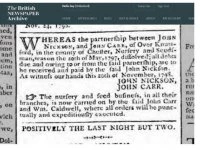
John Nickson had a nursery in Knutsford from around 1759. At some point he took John Carr into partnership. In 1780 William Caldwell (1766-1844) went to work for him as an apprentice. Nickson was married to Margaret who outlived him by 14 years. When Nickson died in 1809 he left an estate worth between £1,500 and £2,000. He left various bequests, including to his cousin William Nickson, also a gardener, who lived in Neston. Nickson retired from the business in 1797 and Carr took Caldwell into partnership. The advert, right, from the Chester Courant, 27 November, 1798 announces the business partnership.
John Nickson's Will was witnessed by Samuel Hickson, John Hickson and Strethill Wright on 12 February 1809 and probate was issued on 15 April 1809. His death must therefore have been anticipated. His estate was valued at between £1,500 and £2,000. His executors were his wife Margaret Nickson and John Buckley of Over Peover. (Buckley was a relative, but the exact relationship is not given.) Nickson left:
- an annual sum of £30 to his sister Sarah Clarke;
- £50 to his cousin William Nickson of Neston, gardener;
- £50 to Joseph Nickson son of above William Nickson;
- £10 in Trust for Elizabeth, granddaughter of John Walker – interest to be paid during her minority and the capital to be paid to her when she attained the age of 18;
- his freehold house in Nether Knutsford (in which he resided) plus garden and appurtenances for the use of his wife Margaret;
- this house after Margaret's death was left to John Buckley of Over Peover, farmer;
- his pew in Knutsford Church was for the use of his wife and sister until their deaths;
- his pew then to be used for the building and maintaining of an organ;
- the balance of his estate to his wife Margaret for her use absolutely with a request that she be kind to Nickson's relation Thomas Buckley, Lower Withington, Blacksmith and his wife during their lifetimes.
Little is known of John Carr. He married Frances Gatley at Witton-cum-Twambrooks on 19 January 1792. He was a partner of John Nickson by 1791 and after Nickson's retirement he went into partnership with William Caldwell. He died around 1803 and his interest in the partnership was dealt with by Mr. Hollins on behalf of his daughter Mary, who had been born in 1795.
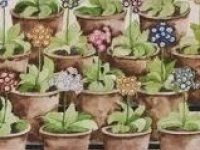
William Caldwell was born on 29th September 1766 in Kirkby, Liverpool, the son of John Caldwell (1735-1798) and Margaret Bullen (born 1737). He went to Knutsford as an apprentice in 1780 when he was just 14 years old. Seven years later he married Sarah Ashcroft, also of Kirkby. They had a number of children, including William (1789-1852) and Thomas who worked as a chemist in Manchester and who died on 19 May 1827.
It would have been either this William or his son who took ten prizes for auriculas at the Knutsford Auricula show held at The Volunteer on 1 May 1824 and the same number of prizes at the Carnation show later that year at the same location.
When William went into partnership in Knutsford, the firm was known as Carr and Caldwell. Following Carr's death, Mr. Hollins was responsible for Carr's daughter Mary's financial interest in the partnership.
Joseph Pickin became a partner with William Caldwell (1766-1844) in September 1832, but he died suddenly, in Liverpool, on 16 October, 1835 aged 29. Mr. J.G. Greenbank sent a notice to The Gardener's Magazine which was published in the March 1836 edition. In this he described Pickin as 'a good man, of business habits, and a scientific practical botanist'.
Joseph's father (also Joseph) was the Head Gardener at Dunham Massey. Joseph junior married Sarah, the daughter of one of Caldwell's customers (Isaac Taylor of the Angel Inn, Knutsford). She was only 16 when they married and Joseph was 23. They had four children – another Joseph plus three daughters, Catherine, Mary and Amy. So Sarah was left a widow at the age of 23 with 4 children to care for. Sarah herself died only 3 years later and the children were split up, being cared for by different members of the family. The partnership of Caldwell and Pickin was not dissolved until after the second William Caldwell's death in 1852, at which time the youngest Joseph was 18 and in employment. He did not follow his father and grandfather into horticulture, instead joining Orrell's Mill in Stockport. He ended up as Manager of the Old Bank in Altrincham.
Joseph Pickin died intestate and his wife was required to fill in a form to administer his estate, which was reckoned at under £800. Pickin died 16 October, 1835 and the form was dated 18 May, 1836. Administration was granted on 8 August, 1836. Sarah Pickin, Isaac Taylor of Knutsford (inn-keeper) and John Goodier of Altringham (grocer) were bound over to pay £1,600 to the Bishop, the condition being that an inventory, etc was made of all his belongings. This was in accordance with an Act for the better settling of Intestates' estates which dated from the time of Charles II.
Following Joseph's death, his wife Sarah signed off the accounts each year until 1836 and after her death Joseph Pickin, senior did so until 1843. John Davies, MD took on the executor's role after that.
(Our thanks to Joseph Pickin's great-great-grandaughter for some of this information.)
The second William Caldwell was born when his father, who lived to be 78, was only 23, so they worked together for many years. This William was married twice and had children from each marriage. His sons were William George, from the first marriage and, from the second, John Thomas (who went on to become a surgeon and apothecary in Manchester, but died at the age of 30) and Herbert, who died aged 15. Of his daughters, Mary Jane married a local tanner/farmer Peter Walkden, and survived into the twentieth century, as did her half-sister, Anne Eliza. Emma was born in 1840 but died young. Louisa did not marry, and died at the age of 27.
When William Caldwell died, aged 63, on 12 May, 1852, he left a modest estate of less than £1,000. His will was witnessed by Francis Massey of Over Knutsford Labourer and William Alderson of Knutsford Agent on 8 May 1852. He died on 12 May 1852, so it looks as if he made his will anticipating his death. Probate was issued on 20 July 1852. Executors were his widow, Mary, son William George Caldwell and son-in-law John Siddeley, Bookseller. Value of property was under £1,000.
The will is complicated and repetitive, but the main points are:
- the income from rents, etc to his wife until his youngest child by her attain the age of twenty-one and on her decease or re-marriage, his youngest child being 21, then property to be sold.
The rents were from the following properties;
- house and farm at Cheers Green, Over Peover, tenant Widow Leech;
- house and farm at Over Peover, tenant Thomas Leech;
- house and farm at Ollerton, tenant Richard Meir;
- freehold land in Ollerton, tenants Caldwell and Pickin, used as Nursery;
- eight freehold cottages with gardens in Ollerton, occupied by Amy Harrop, etc;
- half share of freehold cottages and land in Ollerton occupied by William Woodward and John Clarke;
- two freehold fields and a piece of land at Shaw Heath, Nether Knutsford, used as a nursery by tenants Caldwell & Pickin;
- four freehold cottages in Shaw Heath, Nether Knutsford, tenants William Hough, etc.;
Following the youngest child reaching the age of twenty-one:
- all the freehold estates in Ollerton to his son William George Caldwell, with the proviso that
£1,000 be paid to his daughter Mary Jane Walkden, wife of Peter Walkden;
- all the freehold estates in Shaw Heath, Nether Knutsford, to his daughter Sarah, wife of John Siddeley;
- the rents from the farms in Over Peover occupied by Widow Leech and Thomas Leech to go to his wife Mary so long as she remained unmarried and after her death or marriage, to be sold;
- and the proceeds shared equally among all children of his present wife.
The different approach to the children is because they had different mothers; hence the reference to the children of 'present' wife. William George, Sarah and Mary Jane were surviving children from the first marriage and Emma, John Thomas, Anne Eliza, Louisa and Herbert from the second marriage.
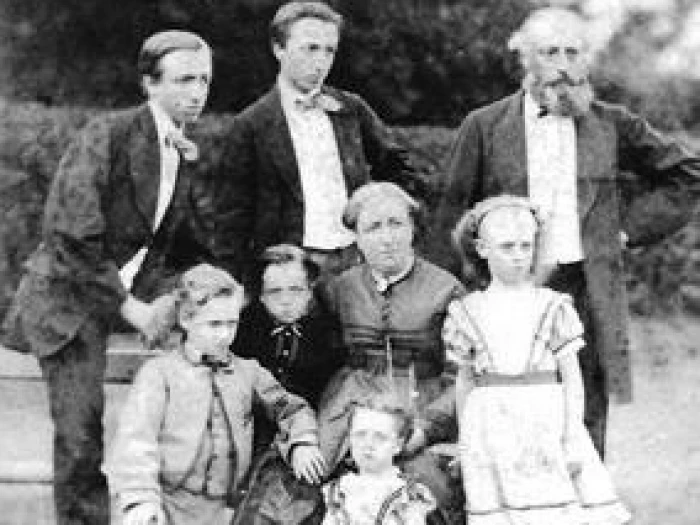
William George was 28 when he succeeded his father to the firm of Caldwell & Pickin. His father died in the May and the partnership was reported as dissolved in the October of 1852. William George always used both his first names, perhaps to differentiate himself from both his father and grandfather and he was soon advertising his stock to 'noblemen, gentlemen, and persons erecting villas'.
He had been married in 1848 to Mary Whittaker Lowe and they went on to have several children, the eldest surviving two, Alfred (born 1853) and William (born 1855), being taken into partnership with their father and although there is a record that the partnership was dissolved in 1877, four years after William George's death, for a while the company continued to be known as W. G. Caldwell & Sons. William George left nearly £7,000, a very substantial sum.
Of his children, Mary Sarah, his eldest, died aged only 11, and Annie, his second daughter in 1862. Of his sons, Alfred proved to be unreliable. He moved to Manchester, where he was a landscape gardener and then a horticultural traveller. Joseph and Frank both emigrated to Canada, but Arthur followed William's lead and joined the family firm. Of his other daughters, Hada never married and died on 27 May, 1933. Hannah followed her great-uncle into a medical career and in 1891 was a nurse at The Hospital for Sick Children in London.
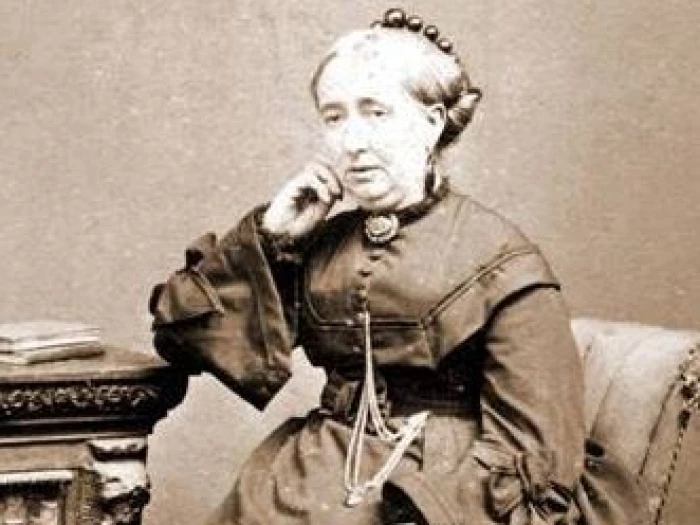
The Will of William George Caldwell was drawn up on 25 July 1872. His witnesses were William Offland, Over Knutsford and Charles Sedgley, Solicitor, Knutsford. William George died 10 October, 1873 and probate was given 25 November, 1873. His executors were his wife, Mary, his sons Alfred and William and his brother-in-law Arthur Byatt of Ashby de la Zouch who was a draper. As William was under age, administration was issued to the other three. The value of his estate was under £7,000. All William George's possessions were left in Trust to his executors, who were also the legal guardians of his infant children (according to the 1871 census there were five children younger than William). The will allowed his executors to do just about anything so long as his family were provided for.
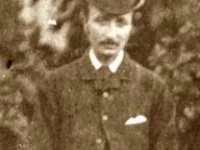
Alfred was educated in Knutsford. He joined his father in the business probably at the age of 15 or 16 and, as far as anyone knows, worked well for his father and enjoyed the prospect that one day he would be the eldest son most likely to take over the business possibly as senior partner with his other brothers. His father renamed the business W.G. Caldwell & Sons as an act of inclusion towards his sons, who he no doubt enjoyed having in the business to assist him.
William George died just as Alfred had turned 21 years of age. Within just over one year of his father's death Alfred had met his wife in London and they married in December 1874. Alfred's mother attended the marriage ceremony in London but was most likely concerned that she may have lost control over Alfred. Over the next few years Alfred proved that he did not have the maturity at such a young age to take on the responsibility of managing a business employing 40 men. His mother Mary overindulged him and records show that he was drawing £6 a week for salary which at that time was an extraordinarily high salary for a young and inexperienced nurseryman.
He then started to slip in to fraudulent activity and theft and he developed a serious drinking problem as a young man. Law suits ensued and Alfred and his family were excommunicated from the business. It appears that this was a slow and gradual process involving his mother giving him chance after chance to redeem himself. But it ended badly and finally after his mother's death in 1888 Alfred and his wife and children were severed from the business entirely. Alfred was not equipped to make a success of his life without the protective surrounds of his family and business and he led a miserable long and unfulfilled life with no doubt many regrets about his behaviour in his earlier adult years.
Alfred remained in the horticultural business. In 1881 he was described in the census as a landscape gardener, and in 1901 and 1911 as a horticultural traveller. During this period the family lived in the areas of Moss Side and Chorlton-on-Medlock in south Manchester. In 1881 there were a couple of newspaper reports regarding an Alfred Caldwell of Whalley Range, which must have referred to him (Whalley Range lies just south of Moss Side). In one, he was the victim of theft. A man named Samuel Lomax stole an ornamental shrub from Alfred's garden at Laurel Bank – a Japanese variety valued at 10 shillings and 6 pence. Mr. Lomax was found guilty and was liable to pay a fine of £20, but got off lightly, being ordered to pay just £5 plus reimburse the 10 shillings and 6 pence (although if he didn't pay he would get two months in prison).
Two years later Alfred was involved in a dispute between John Shaw and Altrincham Council. The Council had contracted with Shaw to create Stamford Park, but things didn't go smoothly and Shaw sued the Council for £700. Alfred was employed by the Council as an expert and ended up suing them for non-payment of his bill for £716 and 2 shillings. He had charged for 181 days and said the work couldn't possibly be done in the 54 days contended. Although he received some payment, he failed to win his case.
Alfred and Annie had two children. The eldest was a girl, Annie Mary Caldwell who became a school teacher and the youngest was named William George, after Alfred's father. Theirs was not a wealthy family; far from having servants, they had to take in lodgers.
This William was only 18 when his father died and, despite the dissolution of the partnership with his brother and father in 1877, the firm continued to be known as W. G. Caldwell & Sons. In 1874, advertisements appeared stating that the firm had been established in 1780, describing the range of plants they grew on 40 acres of nursery ground and stating that the company were 'prepared to furnish estimates for planting and laying out new grounds; also designs for laying out new and for renovating old-established gardens, parks, pleasure grounds, &c. &c.'
William was married (to Helen) and had two small children in 1881, when he was still only 26, at which time the firm was employing 41 men and 8 boys. William and Helen had several daughters before their son, William, was born in 1887. In addition to a large staff and growing family, William was also ensuring that the company was entering into flower shows, where several prizes were won at shows in local towns and even in north Wales from the late 1870s onwards.
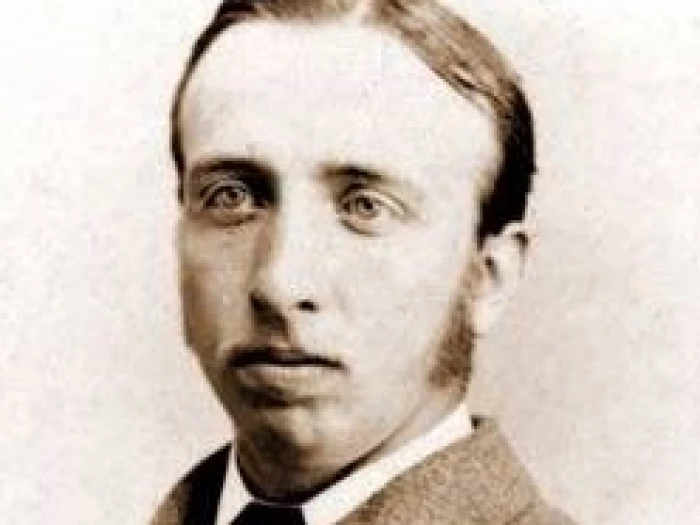
It appears that William Caldwell, son of William George, (1855-1918) did not leave a will as none is referred to in the entry in Ancestry database of probate:
CALDWELL William of Chelford-road Knutsford Cheshire died 3 March 1918. Probate London 12 June to William Caldwell nurseryman and William Clayton clerk. Effects £7545 16s 6d.
Helen Mary Caldwell, wife of William Caldwell (1855-1918) drew up her will on 21 November, 1890. It is possible that she was very ill after the birth of her final child that year although her death was not until 7 November 1894. She left everything to her husband and for some reason probate was not issued until 1907. The witnesses to Helen Mary's will included Seward Snow Gardener Over Knutsford.
This family photograph was taken on the lawn at the Nurseries in 1817, and is courtesy of David Caldwell. Centre is William Caldwell (1855-1918); seated is his son, also William (1887-1953) and William's future bride (David Caldwell's grandparents). Standing on the right is Lance Corporal Tom Caldwell of the Canadian Princess Pat's Regiment. He was killed, most likely just a few weeks after this photograph was taken, at Vimy Ridge. Old William Caldwell died about 18 months later so this is possibly the last photograph of either of them.
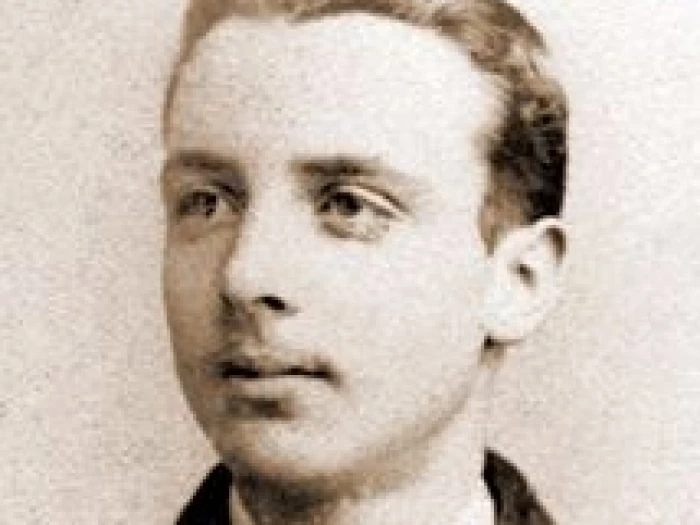
Arthur was 10 years younger than his brother William. When his mother moved to Leamington Spa, Arthur remained at Knutsford. In the 1881 census as a 16 year old he was already working in the business as a seedsman. This appears to have been his initial area of specialisation. In the letters from Leamington their mother suggests to William that it would be beneficial if Arthur could gain some further experience in a London seed house. However this proposal did not appear to go any further. He remained with his brother William but eventually moved up to Ollerton when he married Martha Wilkinson.
They had a daughter, Mary Wilkinson Caldwell and a son, Arthur Davies Caldwell. Arthur worked in legal partnership with William until William's death in 1918. After that, Arthur became senior partner of the business with his nephew, William and 2 nieces until his death in 1939. In his will Arthur stipulated that he wanted both his son and daughter to continue his partnership in the business. At this point his nephew, William vetoed this wish of his late uncle. Arthur's son, Arthur Davies Caldwell went on to establish his own business and rose nursery which was situated on the opposite side of the road to the long established Caldwell's rose nursery at Ollerton.
The women in the Caldwell family have, like so many women in the nursery trade (and elsewhere), left little trace. Sarah Winifred (Aunt Winnie to later generations) wrote a short family history in 1964, but there was little mention of herself, her concern being to record the events and memories of the previous century which would otherwise be lost. Much of this was hearsay – stories that she would have heard as a child about her parents, grandparents, great-grandparents and great-great-grandparents – and not necessarily accurate information. As a child she had been told that William I (1766-1844) was tall and stout; that his son William II (1789-1852) fell into the coal cellar and broke his nose; that William III (1824-1873) had to be at the Rev Green's house at 6 in the morning for his Latin lessons; that a number of the family were in some way associated with the medical profession: Thomas (1802-1827, son of William I) was a chemist; Thomas, son of William II, became a doctor; Hannah Maud (1867-1895, daughter of William III) trained as a nurse at Great Ormond Street.
No doubt Aunt Winnie, daughter of William IV, worked on the nursery from a young age, although this was not recorded in the census of 1901 or 1911. But in 1918, before the end of a war which had brought about 'anxiety, food shortages, black-out and terrible casualty lists' Winnie's father died and she and Maud joined her young brother William (V) as partners to Arthur Caldwell. She remained an important part of the nursery until the end of the Second World War when she retired (aged 64), giving way to her nephew, William VI.
Like her elder sister, Maud was known in the family by her second name. With Winnie, she became a partner in 1918 and unlike Winnie, she married (in 1829). She withdrew from the partnership during the 1930s.
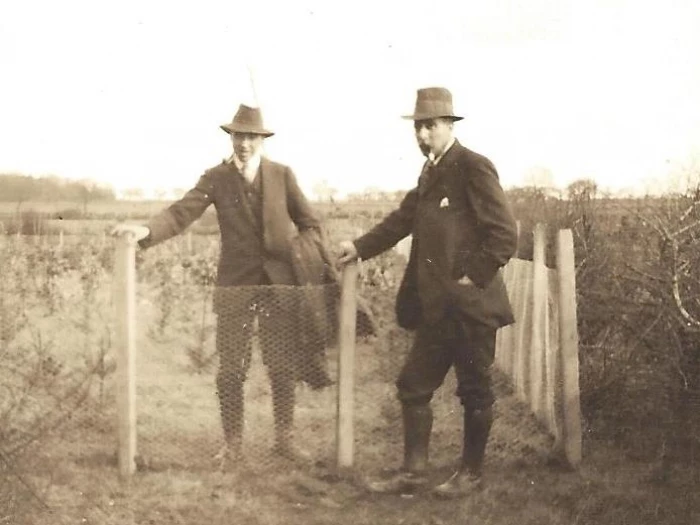
William Caldwell entered the business gradually. At first he was a paid employee, earning 3 pennies, paid to him on 29 Dec 1893, for one and a half days . He would have just turned 6 years old at the time. Little detail is known of him as he was growing up. Sadly his mother Helen died at the age of 39 in 1894 from cirrhosis of the liver. William was only 7 years old at the time. Aunt Hada returned from Leamington Spa to help look after the family and remained at the Nurseries until her death in 1933. It was a big task for her to look after 7 motherless children ranging in age from 4 to 15. Under these circumstances, as the only son it is likely that William would have commenced working at the Nurseries at a very young age.
After the death of his father in 1918 William, with Sarah Winifred and Elizabeth Maud, became a junior partner with his uncle Arthur Caldwell. Elizabeth Maud dissolved her role in the partnership in 1934 some time after she married Robert Bateson, a farmer. Arthur Caldwell died in 1939.
Arthur's son never entered the business as a partner but started up his own Caldwells nursery at his father's original home at Holly House, Ollerton.
It is thought this had much to do with the belief held by William Caldwell that Arthur had married beneath his station. William Caldwell's only daughter, the late Margaret Chattell attributed this (in discussion with David Caldwell) to the uncalled for snobbery of the times. Consequently this caused a rift that extended through the next generation of Caldwells. By all accounts William Caldwell had a severe, disciplinarian side to him.
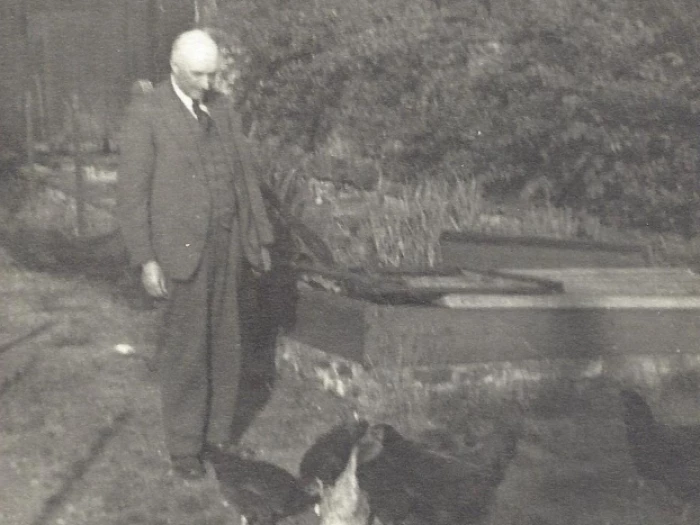
Given the traumatic event of losing his mother at the age of 7 and being the only boy out of 7 siblings it is unknown what effect this may have had upon him in his adulthood. He refused to go to his own son's wedding in 1949 using the excuse that his wife was unable to attend due to her ill health.
Throughout the years of World War II the business went into decline because some of the land had to be used to grow potatoes for the War effort. But the war years were not a good time for businesses and William's wife Margaret became ill and immobilised with osteoarthritis.
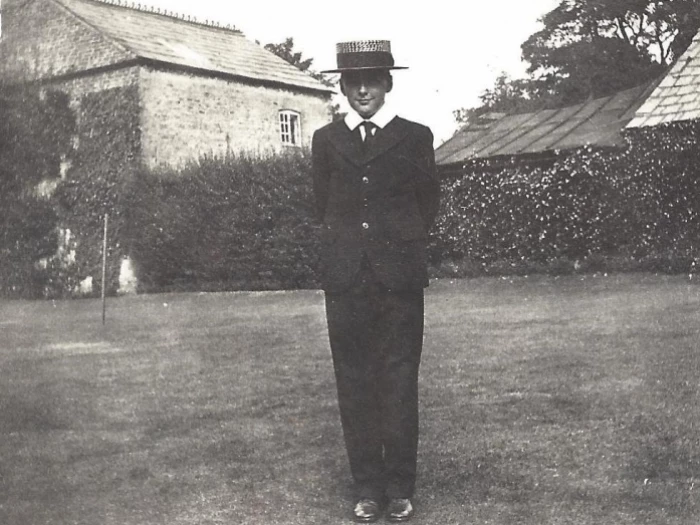
William's brief recollections of his childhood paraphrased from his own words are: They got up at 6.30 to 7.00 am. Edith Snelson, their nanny made breakfast. They never had breakfast with their parents but they did eat their other meals with their parents. William was a very tidy person. He used to fetch coal and wood to the private office at the age of 7 and he was paid to do it. He attended Yorston Lodge Primary School in St Johns Road, Knutsford. The school was run by the Misses Brydon from 1904 to 1953. They believed in concepts such as do and speak to others as you would have them do and speak to you. Also that everything has a place. William reflected these good qualities right throughout his life.
William went to Rydal School in Colwyn Bay until he was 15 in 1937. His parents then placed him with the nurserymen Coles of Leicester for 12 months. He was in digs there and he had a bicycle. He then returned to the Knutsford nursery. William spent 6 months in the Home Guard before volunteering for the Army. After a medical in Manchester, he joined the Queens Bays Regiment which was based in Warminster and had 6 months training and learned to drive tanks.
In Egypt he drove a Crusader Tank, sleeping underneath it at night. The average life expectancy for these tanks in that place was 6 weeks. His tank was hit by a shell and he was badly wounded by shrapnel on his right arm, his hand and wrist and his face, losing his sight for six weeks. Classified as missing in action, he spent 6 months in hospital in Cairo. After a further 4 months driving tanks he was sent to Sicily where he spent the remainder of the War attached to an airbase, loading and unloading aircraft and driving trucks.
William returned from the War after demobilisation in 1946. Aunt Winnie retired from the partnership and this allowed William and his younger sister Margaret to enter the business in 1946 as junior partners with their father William. Informally this began on June 30th 1946 and formally on 19 May 1947. Later, upon her marriage, Margaret withdrew from the partnership leaving William as sole proprietor after his father's death in 1953.
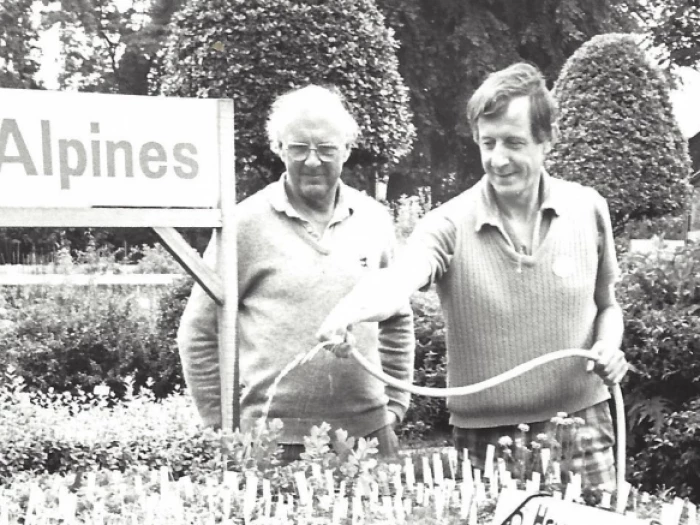
William married Mavis Anne Caldwell in 1949. He found working with his father difficult after his war service, but as William senior became increasingly ill, William junior was able to pick up the reins of running the business with the very strong guiding hand of Willie Wilson who was the Company Secretary in those early days before Frank Passant's time in that role.
William commenced married life in Bramble Cottage, Chelford Road. The family moved to the Nurseries in 1954 after William Caldwell senior died and William junior's mother relocated to Woodvale Rd, Knutsford
William was a well regarded and respected local businessman. He was a hardworking, clear thinking, self-disciplined and very business focused man. It is open for debate that his one major failing may have been that he was not well equipped with the business concept of succession planning. Consequently after his retirement and the sale of the business it ceased trading in the early 1990s.
William was an active participant and past president of the Knutsford Branch of the Rotary Club. He was also a member and past president of Knutsford Golf Club.
For many years whilst their family were growing up William and Mavis had their annual holiday in Anglesey at Benllech Bay and Moelfre. As their children left home they expanded their horizons for their annual holidays travelling abroad. One of their favourite places was Corsica.
Following World War II and with the retirement of Aunt Winnie, Margaret Caldwell, daughter of William V and sister of William VI, was taken into partnership. The de facto start was 1 July 1946 although the official paperwork was not completed until 19 May 1947. The partnership agreement records the business as being 'nurserymen, seedsmen and landscape gardeners'.
Don Leaman is the grandson of Arthur Caldwell (1865-1939). Arthur had two children – Arthur Davies Caldwell and Mary Wilkinson Caldwell – and both children were left Arthur's share in the partnership of Caldwell & Sons. There was a big age difference between Arthur Davies and his cousin William V (15 years) and they did not get on. Young Arthur was not allowed to take his place in the business. Mary Wilkinson Caldwell married and it was her son Don Caldwell Leaman who eventually took his place in the firm alongside William VI.
